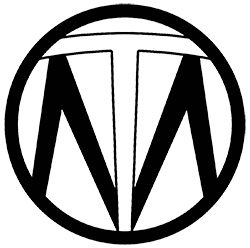In LED display projects, “maintenance method” is often a link that customers ignore but engineers are most concerned about. Most traditional LED screens require post-maintenance—that is, there is enough maintenance channel left behind the screen. The problem is, nowadays, commercial spaces, exhibition halls, and conference rooms are worth every inch, so how can there be so much space for you to drill around behind? Therefore, the full-front maintenance of LED displays has become the new favorite of many projects.

1. What is “full pre-maintenance”?
Simply put, full-front maintenance means that all installation, maintenance, and replacement of parts can be completed from the front of the screen.
Module: Use magnetic suction structure or special tools to remove it directly from the front.
Power supply and receiving card: Open the box module in front and you can operate and replace it.
System debugging: No need to disassemble the screen and walk behind, just connect the device in front.
This design does not require 50cm or even 1 meter of maintenance channel behind the screen, and there is no problem with wall installation. For indoor small spacing, shopping mall advertising screens, and conference background walls, it is simply a “life-saving” solution.
2. The core advantages of full preservation
Save space: For example, install a P2.0 high-definition advertising screen in the shopping mall atrium. After full front maintenance, the screen is directly attached to the wall, and the overall thickness is even less than 10cm, making it look more beautiful.

High maintenance efficiency: If a module is broken, take it out in one go and get it done in a few minutes without affecting the overall operation.
Flexible installation: suitable for complex structures such as wall embedded, curved walls, cylinders, etc.
Good safety: reduce the risk of climbing ladders and walking behind the passage, especially in high-altitude installation scenarios.
3. Technical details behind it
Magnetic module design: Strong magnets are adsorbed on the box frame, which is both stable and convenient to disassemble and assemble.
Modular structure: The power supply, receiving card, and wire can be replaced independently without affecting other units.
Cable optimization: The cabling is concentrated on the front maintenance surface to reduce the complexity of internal wiring.
Sealing and dust protection: Front maintenance does not mean loose structure, and a good design can still achieve high IP protection level.
4. Actual cases
Last year, a technology company in Shenzhen installed a 20㎡ P1.5 full-front maintenance LED screen in the conference hall of the new headquarters. Because there is a load-bearing wall behind the scene, the rear passage cannot be opened at all, and the traditional rear maintenance plan is directly passed.
As a result, after the installation was completed, the screen thickness was less than 9cm, and it only took 5 minutes to replace the module in front. The customer said: “Finally, there is no need to worry about dust or spider webs behind the screen.”
5. Applicable scenarios
Indoor small-pitch LED screen: conference room, exhibition hall, monitoring room.
Shopping mall advertising screen: wall installation, cylinder advertising.
Stage design background screen: It does not affect the layout of the space behind the stage.
Transportation hub information screen: Areas where space is limited but require frequent maintenance.
6. Purchase suggestions
Confirm the magnetic suction force and accuracy: The inferior magnetic suction module is prone to loosening, and there will be slight misalignment after long-term operation, affecting the flatness of the picture.
Consider the heat dissipation design: wall-mounted installation is prone to heat accumulation, so choose a box with active heat dissipation or optimized ventilation.
Pay attention to after-sales service: Although full pre-maintenance is convenient, it has requirements for disassembly and assembly experience, and it is important to find an experienced installation team.
Price factor: The cost of structural design and accessories for full maintenance is slightly higher, and is generally 5% to 15% more expensive than ordinary LED screens.
7. Future trends
According to data from the China Optical Optoelectronics Industry Association, in 2024, the proportion of pre-maintenance products has exceeded 60%, and is expected to exceed 80% within three years. With the support of new packaging methods such as COB and GOB, full-front maintenance will be more durable and more protective, and gradually become the standard configuration for LED displays.
Conclusion
Full front maintenance of LED displays is not only a change in maintenance methods, but also an upgrade of installation concepts. It allows designers to arrange space more freely, save engineers and make users less worried – this is the meaning of technology. After all, in today’s tight space, “save one centimeter is saving one cent of the cost”, and the maintenance of the entire front just grasps this pain point.
Thank you for watching. I hope we can solve your problems.


